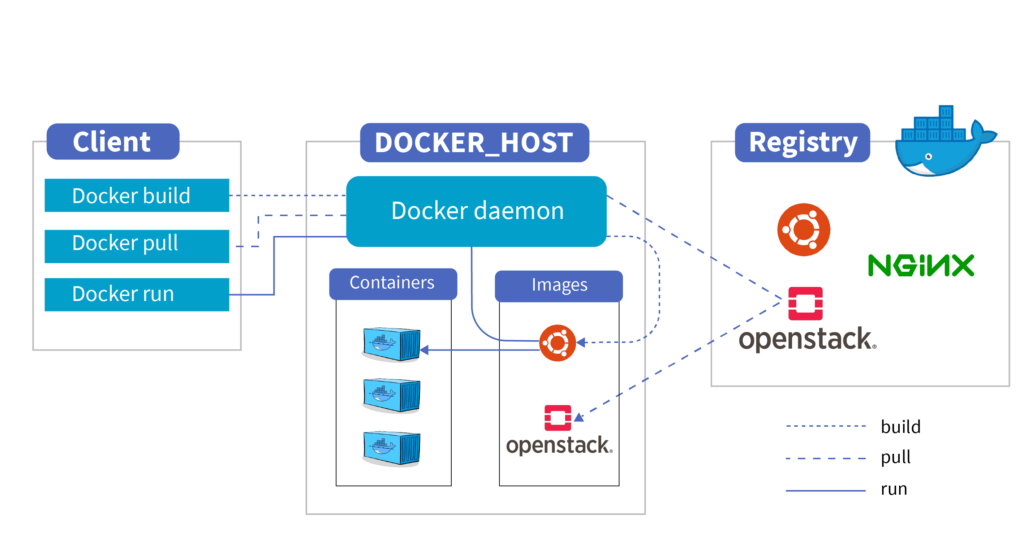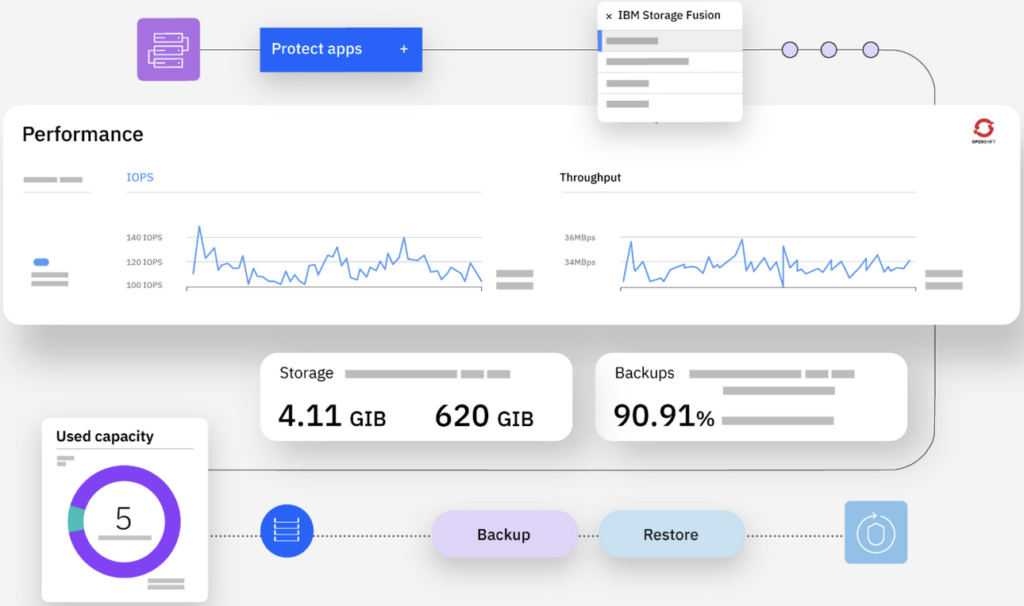In recent years, containers have revolutionized the way software is developed, deployed, and managed. They have become a fundamental technology for organizations aiming to achieve agility, scalability, and efficiency in the modern IT landscape. The widespread adoption of containers is reshaping the enterprise computing landscape, and the need for enterprise-class services, such as IBM Fusion, has never been more apparent.

The Rise of Containers
From Chroots to Kubernetes
The journey of containers can be traced back to the early 2000s, with the concept of chroot, which allowed the isolation of processes in separate directory environments. Over time, technologies like cgroups and LXC (Linux Containers) paved the way for containerization. However, it was Docker’s release in 2013 that propelled containers into the mainstream. Docker simplified the containerization process, making it accessible to developers and operations teams alike.
Containers provide a consistent and lightweight environment for running applications, isolating them from the underlying infrastructure. This isolation enables portability, scalability, and the ability to package applications and their dependencies. As a result, containers have transformed the software development and deployment landscape, catalyzing the adoption of microservices and cloud-native architectures.
The Need for Enterprise-Class Services
Managing Complexity at Scale
As the adoption of containers accelerates in the enterprise, so do the complexities associated with managing containerized workloads. Container orchestrators like Kubernetes have become essential tools for managing containerized applications. However, organizations face new challenges in areas like backup, disaster recovery, multi-cloud deployments, and persistent storage:
1. Backup and Recovery:
Containers require robust backup strategies to protect against data loss and service interruptions. Automation and snapshot management are key features to ensure data integrity. Modern applications are no longer limited to simple data and code; they often include complex configurations, user data, and stateful workloads. Protecting this data is vital for business continuity and regulatory compliance.
A robust backup and recovery strategy is essential to:
– Ensure the ability to roll back to a previous state in case of failures.
– Protect against data corruption or accidental deletions.
– Comply with industry regulations that require data retention and protection.
– Minimize downtime in the event of disruptions or disasters.
2. Disaster Recovery:
Disaster recovery in a containerized environment involves planning for multi-region deployments, automated fail-over, and data replication. Automation and documentation are crucial for minimizing downtime. Modern business operations depend heavily on the availability of applications. Even a minor disruption can result in financial losses, damaged reputation, and loss of customer trust.
Disaster recovery solutions should include:
– Automation of failover procedures to reduce downtime.
– Multi-region or multi-cloud deployments to ensure application availability in different geographic areas.
– Data replication to create redundant copies of essential data, making it resistant to single points of failure.
– Regular testing of disaster recovery plans to verify their effectiveness.
3. Multi-Cloud Strategies:
Companies are increasingly adopting multi-cloud and hybrid cloud strategies to mitigate vendor lock-in, enhance redundancy, and optimize costs. Multi-cloud management tools help orchestrate container deployments across various cloud providers. Multi-cloud and hybrid cloud strategies have gained popularity for several reasons:
– Vendor Diversification: Relying on a single cloud provider can create vendor lock-in and limit negotiation power. Multi-cloud strategies enable organizations to diversify their cloud portfolio and avoid dependency on a single provider.
– Redundancy and Reliability: Multi-cloud deployments can improve resilience by leveraging multiple cloud providers. This reduces the risk of service disruptions due to outages or issues with a single cloud provider.
– Optimized Costs: Multi-cloud approaches enable organizations to select the most cost-effective cloud services for specific workloads. This cost optimization can lead to significant savings.
– Compliance and Data Residency: Multi-cloud strategies allow companies to choose cloud providers that comply with specific data residency requirements or industry regulations.
4. Persistent Storage:
Persistent storage is critical for stateful applications. While the lightweight and ephemeral nature of containers is beneficial, it also brings challenges for applications with persistent data requirements. Modern container orchestration platforms offer solutions for managing persistent storage efficiently, ensuring that data is retained and accessible even when containers are ephemeral.
Challenges associated with persistent storage in containerized environments include:
– Data Consistency: Ensuring data consistency in distributed and scalable applications can be complex. Modern container orchestration platforms like Kubernetes provide solutions for managing data consistency.
– Data Protection: Protecting data against failures or data corruption is crucial. Regular backups and storage replication are essential strategies for safeguarding data integrity.
– Scalability: As containerized applications scale up or down, managing persistent storage and ensuring data availability becomes a challenge. Modern solutions provide tools for dynamically allocating and managing storage resources.
Understanding Containerized Storage Needs: Data-Centric Architecture
The transition to containerized applications has brought about a fundamental shift in how we think about storage needs. In traditional architecture, storage capacity was often the primary concern. It was a matter of allocating enough disk space to accommodate applications and their data. However, containers have ushered in a new paradigm where it’s less about raw storage capacity and more about managing data efficiently and effectively.
Data Management over Raw Capacity
In containerized environments, the focus shifts towards data management rather than just capacity provisioning. Here’s why this shift is crucial:
1. Granularity of Containers:
– Containers are inherently lightweight and designed to do one thing well. They encapsulate specific processes or microservices. This granularity means that applications and their data are broken down into smaller, more manageable pieces. As a result, data storage needs become more distributed, and the management of individual data components takes center stage.
2. Container Immutability:
– Containers are often designed to be immutable, meaning that once they are created, their contents remain unchanged. This immutability principle extends to data as well. Data within containers is treated as immutable, promoting a clean and predictable data environment.
3. Container Orchestration:
– Container orchestration platforms like Kubernetes provide tools for dynamic storage provisioning, data replication, and data consistency. These features enable the efficient management of data for applications that are dynamically scaled and deployed across multiple nodes.
4. Data Persistence:
– While the lightweight and ephemeral nature of containers is beneficial, it also brings challenges for applications with persistent data requirements. Modern container orchestration platforms offer solutions for managing persistent storage efficiently, ensuring that data is retained and accessible even when containers are ephemeral.
5. Data Movement and Sharing:
– Containerized applications often require data movement and sharing among containers and even across clusters. These operations must be managed carefully to maintain data consistency and integrity.
6. Data Backups and Recovery:
– Data in containerized environments needs robust backup and recovery strategies. Automation, snapshots, and point-in-time recovery are critical components of data management in containerized workloads.
7. Data Security and Compliance:
– As data management within containers becomes more granular, security and compliance considerations take on added significance. Protecting data, enforcing access controls, and ensuring compliance with regulations are integral parts of containerized data management.
In summary, the shift to containerization brings about a change in how we think about storage. It’s no longer just about provisioning raw capacity but rather focusing on effective data management within containers. As containerized applications become more complex and scalable, the need to efficiently manage data for consistency, integrity, and availability becomes paramount. Storage solutions like IBM Fusion are designed with this data-centric approach in mind, offering tools and capabilities to manage data effectively in the world of containers.
Introducing IBM Fusion: An Enterprise-Class Solution

IBM Fusion, like other similar services, addresses these challenges head-on, offering a range of features designed to enhance the reliability and resilience of containerized workloads. It provides:
– Automated Backup and Snapshot Management:
Protecting your data is made easy with automated backup schedules and snapshot capabilities. Automated backups simplify the process of protecting your containerized applications. They ensure that backups are taken regularly, reducing the risk of data loss in case of unexpected failures or incidents.
Snapshot management allows you to capture the state of your applications at specific points in time, enabling you to roll back to a known-good state when needed. This can be crucial for maintaining application stability and data consistency.
– Disaster Recovery Orchestration:
IBM Fusion offers tools to automate failover procedures and minimize downtime in the event of a catastrophe. Disaster recovery orchestration streamlines the process of failing over your applications to a secondary location or cloud provider, ensuring that your services remain accessible to users even in the face of data center outages or other disasters.
Automation also simplifies the testing of disaster recovery plans, enabling you to ensure that your recovery procedures work as expected.

– Multi-Cloud Deployment:
With IBM Fusion, you can deploy containerized workloads across multiple cloud providers, making your infrastructure more resilient and cost-effective. Multi-cloud deployment enables you to diversify your cloud portfolio and leverage the unique advantages of different cloud providers, all while managing your applications from a single platform.
By distributing your workloads across various cloud providers or regions, you can achieve higher availability and better performance. IBM Fusion simplifies the process of deploying and managing your containers in multi-cloud and hybrid cloud environments.
– Persistent Storage Management:
IBM Fusion helps you manage containerized storage efficiently, ensuring that your stateful applications run smoothly. Containers often require persistent storage for databases, user uploads, and configuration data. IBM Fusion offers tools to simplify the management of persistent storage, making it easier to allocate, expand, and protect storage resources.
This includes solutions for data consistency in distributed environments, ensuring that your applications maintain their data integrity. Managing persistent storage at scale is crucial for running mission-critical workloads.
– Security and Compliance Features: IBM Fusion goes beyond basic container management, offering security and compliance
features to meet the most stringent regulatory requirements. Data security and regulatory compliance are top priorities for many organizations, especially those operating in regulated industries.
IBM Fusion provides features that help you secure your containerized applications and data, including access controls, encryption, and auditing. These features help you meet your organization’s specific security and compliance needs, ensuring that your containerized workloads align with industry regulations and best practices.
The rise of containers is transforming the way organizations develop, deploy, and scale applications. To fully harness the power of containers and ensure the availability and data integrity of your containerized applications, it’s crucial to invest in enterprise-class services like IBM Fusion. These services offer the tools and automation necessary to handle complexities at scale and support your organization’s journey into the containerized future.
As more enterprises continue to adopt containers and leverage multi-cloud strategies, the role of enterprise-class services becomes increasingly critical in ensuring business continuity and resilience.
Call to Action: Learn More About IBM Fusion
Unlock the full potential of your containerized applications with IBM Fusion. Discover how our enterprise-class services can simplify the complexities of managing container workloads, ensure data integrity, and provide robust solutions for backup, disaster recovery, multi-cloud deployments, and persistent storage.
Whether you’re a seasoned container expert or just beginning your containerization journey, IBM Fusion has the tools and capabilities to support your organization’s success in the world of modern application deployment.
Don’t miss out on the opportunity to elevate your container strategy. Explore IBM Fusion today.

